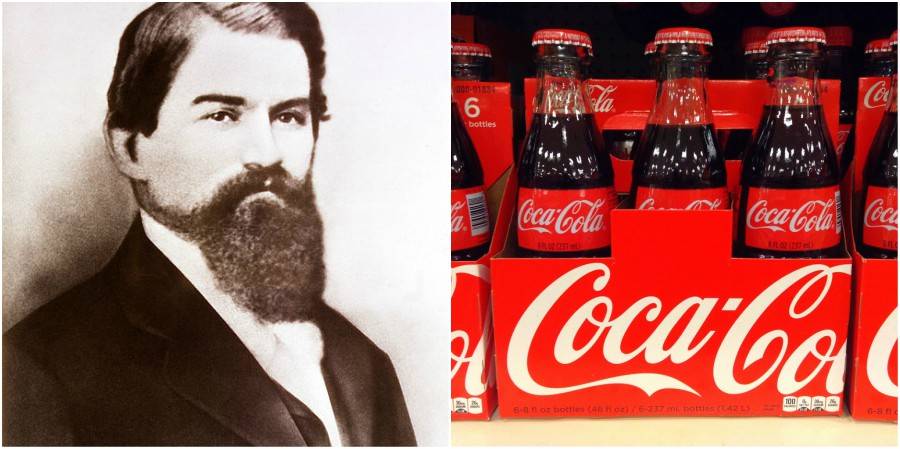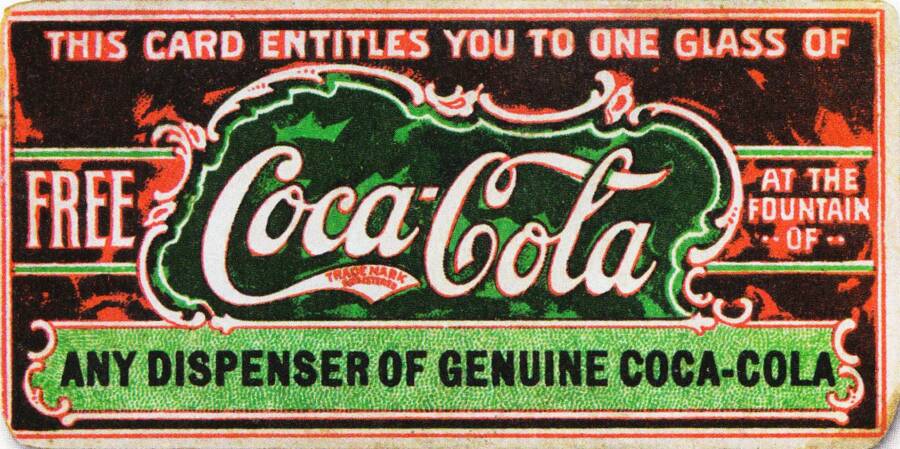If John Pemberton was never in the American Civil War, he would never have become addicted to morphine and we wouldn't have Coca-Cola.

Wikimedia CommonsJohn Stith Pemberton, the man who invented Coca-Cola.
Coca-Cola is so ubiquitous and world-famous that its easy to forget its captivating origin story — or even, that it has one worth a look in the first place. Everyone has heard the rumors it once contained cocaine, but only a sliver of the population knows anything about its inventor John Stith Pemberton.
According to The New Georgia Encyclopedia, John Stith Pemberton was born on January 8, 1831 in Knoxville, Georgia. He made a name for himself in the state’s medical establishment, though his strength lay in medical chemistry rather than traditional medicine.
Part businessman, part pharmacist and chemist, Pemberton spent his entire life working to reform medicine and improve upon the industry’s practices and solutions. The Georgia Department of Agriculture uses his laboratories to this day — over 125 years after his death.

Wikimedia CommonsA portrait of John Stith Pemberton from sometime before 1888.
Pemberton’s labs were converted into Georgia’s first testing facilities and were staffed by employees he personally hand-picked. These laboratories were responsible for virtually eliminating the sale of bootleg chemicals in the state, and made prosecution of fraudulent varieties easier to accomplish.
A graduate student and Civil War veteran, Pemberton would eventually concoct one of the most enduring beverages of all time — before dying a penniless drug addict who sold the Coca-Cola rights. His life is truly a winding narrative of impressive accomplishments, hash challenges, and woefully unfortunate events.
John Pemberton’s Early Life
Pemberton went to school in Rome, which is located in a triangle beset by Birmingham, Alabama, and Chattanooga, TN. He and his family lived there for nearly 30 years, during which time he attended the Reform Medical College of Georgia in Macon, studying both medicine and pharmacy.
In 1850, when he was 19 years old, Pemberton received his license to practice Thomsonian (or botanic) principles. This field was rooted in organic, herbal remedies and intended to cleanse the patient of toxins. It was not a very respected niche and treated with strong suspicion by the public, to put it mildly.
After practicing medicine and surgery in Rome, he opened a wholesale-retail business in Columbus in 1853. According to Encyclopedia, he married Wesleyan College student Ann Eliza Clifford Lewis that same year, and the newlyweds had a son named Charles the following year.
Pemberton’s new store specialized in materia medica (substances used in making medical remedies). Pemberton garnered his graduate degree in pharmacy a few years before the Civil War in the 1860s.
“We are direct importers manufacturing all the pharmaceutical and chemical preparations used in the arts and sciences,” the company, J.S. Pemberton and Company of Columbus claimed. This was unique in the South during that time.
John Stith Pemberton And The Civil War
Pemberton’s business opened its doors in 1860 and had $35,000 worth of the latest most high-tech equipment on its side. Some of it was even designed and patented by the company itself, which one reporter from the Atlanta Constitution called “a magnificent establishment” in 1869.
When the labs were relocated to Atlanta, he dubbed Pemberton’s business “one of the most splendid Chemical Laboratories that there is in the country.” And though he was also called “the most noted physician Atlanta ever had,” accolades and respect did not prevent him from joining the fray of war when the time came.
Pemberton joined the army of the Confederacy in May 1862, and was made first lieutenant. As a founding member of the Third Georgia Cavalry Battalion, Pemberton defended the city of Columbus became lieutenant colonel as a result.

YouTubeA statue of Pemberton outside of the Coca-Cola headquarters.
When Union troops under General James Wilson’s command reached Columbus one Easter Sunday of 1865, Pemberton was in direct line of fire and almost died. The battle would directly impact the rest of his life and ultimately lead to both his greatest success and biggest weakness due to his subsequent addiction to morphine.
Had Pemberton not been injured by both gunshot and sword wounds, he likely would’ve never resorted to morphine in the first place. That would’ve arguably prevented him from inventing Coca-Cola, but also liberated him from the future troubles of having a substance abuse problem.
The wounded soldier became hooked almost immediately, using it initially to relieve his pain. Unfortunately, he ultimately fell victim to the chemical as a lifelong crutch for whatever mental maladies and psychological ailments he was suffering from.
John Pemberton Invents Coca-Cola
When the smoke of the Civil War cleared and America busied itself with the duty of getting back to living, Pemberton partnered with Columbus physician Austin Walker and expanded his lab. The idea was to develop new products and sell medical and photography supplies, and branch out into cosmetics.
The Sweet Southern Bouquet perfume was a success, and in 1869, the veteran formed the Pemberton, Wilson, Taylor and Company firm and moved to Atlanta the following year. As a trustee of Atlanta Medical College (which is now the modern-day Emory University Medical School), he solidified the reputation of himself and of his labs as sophisticated and state-of-the-art.
The original beverage was called Pemberton’s French Wine Coca and hit the market in 1885. With coca leaves imported from South America adding a particular twist what would otherwise be a mere soft drink, Pemberton sold the soda as a nerve tonic, mental aid, headache remedy — and a cure for morphine addiction.

PixabayA vintage Coca-Cola delivery truck, and visceral reminder of just how long the drink has been around.
The seemingly all-curing jack of all trades drink sold rather well, with Pemberton later admitting to an Atlanta newspaper reporter that he based it on an Italian-French beverage called Vin Mariani which was previously endorsed by Pope Leo XIII. That one, too, contained stimulating coca leaves.
Pemberton differentiated his particular drink by adding extracts from other tropical plants, like the caffeine-containing kola nut from African trees and the Central American damiana shrub leaf — which was rumored to contain aphrodisiac properties.
When hushed whispers of alcohol prohibition began to hit Atlanta’s city government in 1886, Pemberton feared his new and popular drink could soon be banned. Though this change in laws was actually enacted that very year, prohibition in the city only lasted for one year.
Nonetheless, the now renowned shift from Pemberton’s French Wine Coca to Coca-Cola had already taken root.

Wikimedia CommonsJohn Pemberton’s home on Marietta Street in Columbus, Georgia.
At his Marietta Street home, the pharmacist-turned-war-veteran began a series of experiments on the drink using an industrial-sized mixing-and-filter machine that ran from the building’s second story down to the ground level.
Pemberton sent out samples of his new alcohol-free iteration to pharmacies around Atlanta. His nephews were in charge of recording and collating customer reactions, which led to one of Pemberton’s main breakthroughs in arriving at the final concoction — adding citric acid to combat the syrup’s intense sweetness.
The final version was finished in May 1886 and was initially sold only in syrup form at the Jacob Pharmacy in town. Sold for five cents per portion, it would be mixed on the spot with water before customers drank it. When a

Wikimedia CommonsThe drink was initially sold only at pharmacies, and in syrup form. It would get mixed with water on the spot. Only years later was it actually bottled and canned for retail business.
Only eight years later did Pemberton decide to bottle the beverage, cut out the middle man, and expand. He formed Pemberton chemical Company to market it and put his son in charge of production. Charles Pemberton eventually succumbed to his own morphine addiction and died.
As for the name — Coca-Cola — it was Pemberton’s bookkeeper Frank Robinson who coined the billion-dollar monicker. He even designed the logo, which is still in use today, more than a century later.
Coca-Cola Takes Off — Slowly But Surely
First-year sales of Coca-Cola topped off at $50. With a sunken cost of $70 in supplies, Pemberton saw this as an utter failure, while Robinson had a more nuanced view. To him, making a loss wasn’t the end of the world, as the company had only just begun to create some exposure for itself.
Robinson convinced his boss to allocate a significant portion of their budget to continue marketing the beverage through free drink coupons, banners, streetcar placards and store awnings that read “Drink Coca-Cola.” The drink soon made a name for itself in Atlanta, and Pemberton had the strong feeling it would spread across the country.
Unfortunately, he died before he could reap what he sowed. Pemberton was diagnosed with stomach cancer, and started selling the company off piece by piece until he owned only a third of it. Investor and Northern pharmacist Asa G. Candler was one of the main owners by this point, while Pemberton left his third of the pie for his son.

Wikimedia CouponsPemberton’s bookkeeper Frank Robinson suggested investing more money in promotion and marketing like these free-drink coupons.
The last days of his life were spent obsessively frequenting his lab to find ways of refining the beverage. After Pemberton’s death on Aug. 16, 1888, vicious in-fighting between investors like Candler and Pemberton’s son Charles ensued.
It is still a baffling mystery as to how Candler alone won control of the company in the 1890s. With Pemberton’s widowed wife struggling financially, and his son Charles managing a troubling morphine addiction, the family’s once-promising future had turned entirely bleak.
In 1905, the Coca-Cola we know and love came into existence. The fresh coca leaves were taken out of production, and by the 1930s, Coca-Cola was simply a part of day-to-day life in America. The soda does still contain coca leaves, but of the spent variety — the cocaine is already extracted before they’re infused into the beverage.
In the end, the ambitious scientist and entrepreneur created one of the most successful and enduring consumer products of our time — one that has yet to be rivaled by competing alternatives in its niche. According to The Coca-Cola Company, its products are consumed more than 1.9 billion per day.
All in all, an impressive increase from $50 worth, at the turn of the 20th century.
Enjoy this look at John Pemberton, the man who invented coca-cola? You may want to read more about the secret history of Coca-Cola. Then, learn about these dangerous and illegal drugs that doctors once prescribed as miracle cures.





